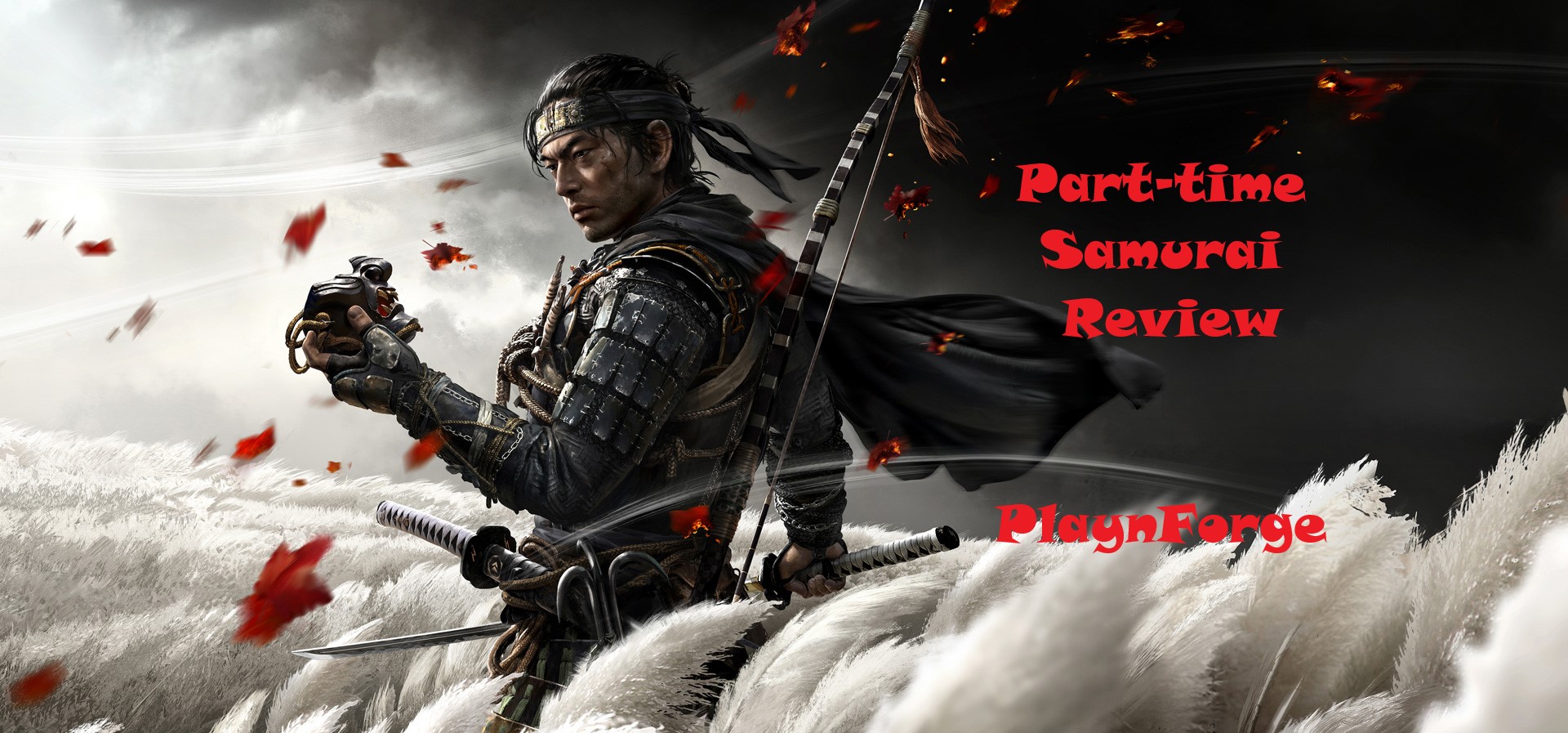Ghost of Tsushima is one of those games you see recommended all the time. It’s up there with The Witcher 3, Breath of the Wild, and all of those RPGs that have been around for ages. You’ll see it praised as one of the most beautiful open worlds or most interesting stories. But the question remains: is it worth all that hype? (spoiler alert: it absolutely is).
Let’s get into what Ghost of Tsushima is all about, what you can expect in terms of combat, and find out whether it’s worth your time.
Gameplay: Mastering the Art of the Samurai
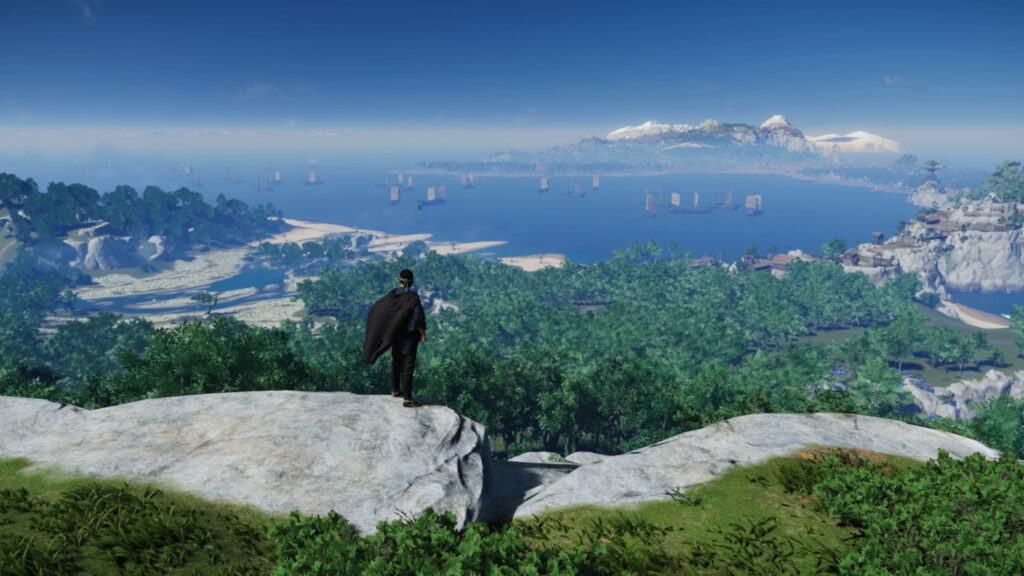
If you’re jumping into Ghost of Tsushima, get ready for a gameplay experience that combines the honor of being a samurai with the sneaky skills of a ghost. Here’s the deal: yes, you’ll be slicing and dicing your way through Mongols (that part’s pretty awesome), but you’ve got to be smart about how you approach combat, exploration, and strategy.
Samurai Combat
First up: the combat. As a samurai, you’ll be mastering precise swordplay, and it feels so satisfying. The system is all about timing and choosing the right stances to counter enemy attacks. You’ll need to think on your feet because every encounter is a little bit different.
Ghost Combat
Now, here’s where things get interesting: as the “Ghost” of Tsushima, you’ll also get to play sneaky. Stealth is key, and I’m talking about silently taking out enemies with smoke bombs, distractions, and, of course, your trusty bow. The game gives you the freedom to choose your approach.
Exploration
When you’re not in battle, you’re out exploring Tsushima’s stunning world. The game encourages you to roam, uncovering secrets, finding collectibles, and completing side quests that deepen the story. You’ll stumble upon hidden shrines, eerie temples, and villages that are worth visiting just for the atmosphere. The world feels alive, and you’ll get lost in it.
Upgrades and Customization: Make Jin Your Own
As you progress, you’ll unlock new abilities and gear that let you customize your playstyle. Want to be more stealthy? Focus on ghost-related upgrades. Want to be a samurai through and through? Upgrade your combat skills and armor. There’s a lot of room for experimentation, and the upgrades feel rewarding. Plus, who doesn’t love adding a little flair to your character? You’ll be rocking some seriously cool armor sets as you make your way through the game.
Unique Features: Little Touches That Make Tsushima Special
Ghost of Tsushima is packed with cool, unique features that set it apart from your average open-world game. It’s the little details that make it feel like a true love letter to samurai films and Japanese culture. Let’s talk about some of these standout features that you’ll definitely want to try out.
Kurosawa Mode: A Tribute to Classic Samurai Films
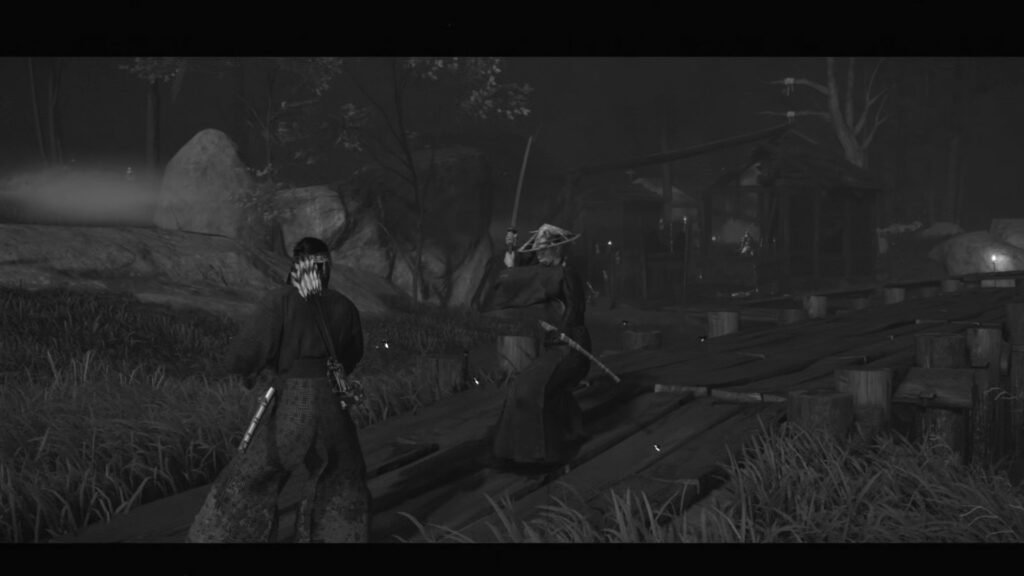
If you’re a fan of Akira Kurosawa’s samurai films, you’re in for a treat. Kurosawa Mode gives the game a cinematic, black-and-white look, complete with film grain and a more muted color palette. It makes the entire experience feel like you’re playing in a classic samurai movie, with dramatic lighting and crisp, choreographed action scenes. It’s a must-try if you want to feel like you’re starring in your very own samurai epic.
Original Japanese Voice Acting: For the True Experience
Ghost of Tsushima gives you the option to play with Japanese voice acting, which, let me tell you, totally ups the authenticity factor. The emotional weight of the story hits differently when you hear it in the original language. Plus, the voice performances are top-notch. If you want to immerse yourself fully in the world of Tsushima, switch to the Japanese voices and watch the game come to life.
The Wind: Your Guide, Not a Map
Forget about constantly checking your map or GPS. In Ghost of Tsushima, the wind becomes your navigation system. You’ll follow the direction of the breeze to guide you to objectives, side quests, and even hidden treasures. It’s a simple but beautiful touch that keeps you in the moment, as you don’t have to break immersion by constantly checking the map. The world feels much more connected, and you’ll find yourself paying attention to the environment more than ever.
Haiku Compositions: Create Your Own Peace
Here’s something you didn’t expect—writing Haikus. As you explore the world, you’ll come across serene spots where you can pause and compose a Haiku, reflecting the beauty and mood of the surroundings. It’s a peaceful, almost meditative feature that lets you engage with the game’s themes on a deeper level. Plus, the Haikus you create help unlock perks for your character. It’s a small feature, but it adds a lot to the game’s calm, contemplative side.
Photo Mode: Capture Your Epic Moments
For those of you who just need to take a screenshot every time the light hits just right (guilty), the photo mode in Ghost of Tsushima is top-notch. You can adjust everything from the time of day to the facial expressions of your characters and even change the wind’s direction to get the perfect shot.
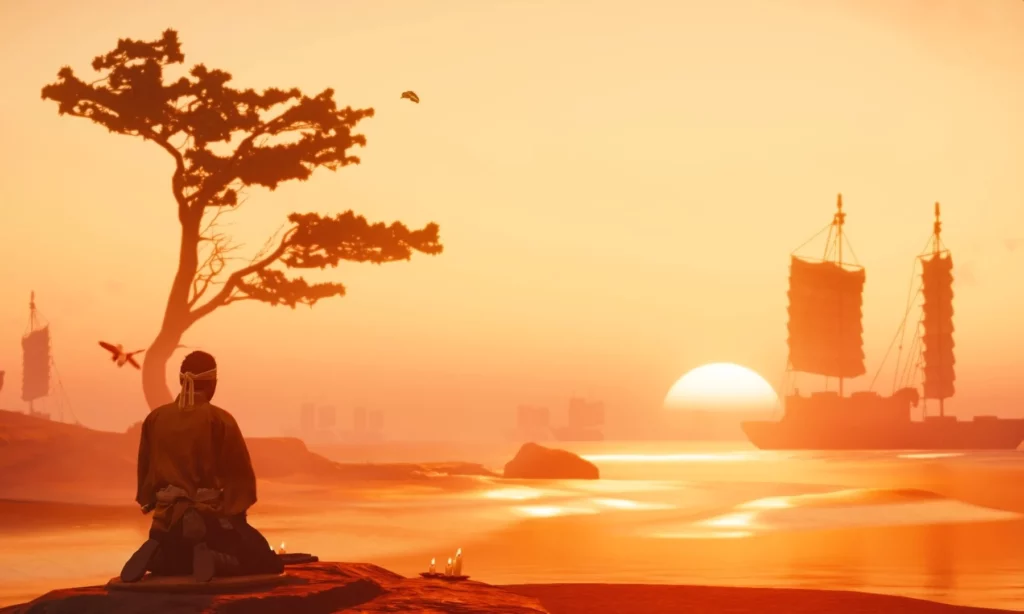
The Story of Ghost of Tsushima: A Samurai’s Struggle
You play as Jin Sakai, a samurai on a mission to defend his home, Tsushima Island, from the Mongol invasion. But when the Mongols attack, things go south fast.
Jin’s uncle, Lord Shimura, is captured, and the samurai are all but wiped out. The island falls into chaos, and Jin is left with a harsh choice: stick to the honorable ways of the samurai, or adapt to new, often brutal methods in order to defeat the Mongols.
As he starts to embrace stealth and guerilla tactics, he becomes the “Ghost” of Tsushima, using methods that go against everything the samurai stand for. This puts him at odds not only with the Mongols but with his beloved uncle, who believes that honor is the only way to protect their people.
The game does a brilliant job of making you feel the weight of Jin’s decisions. His transformation is a constant struggle as he learns what it means to protect his home—and what he’s willing to sacrifice for it. Ghost of Tsushima tells a story of survival in the face of overwhelming odds, and asks tough questions about what it means to be a hero when the world around you is falling apart.
Graphics and Audio: A Feast for the Senses
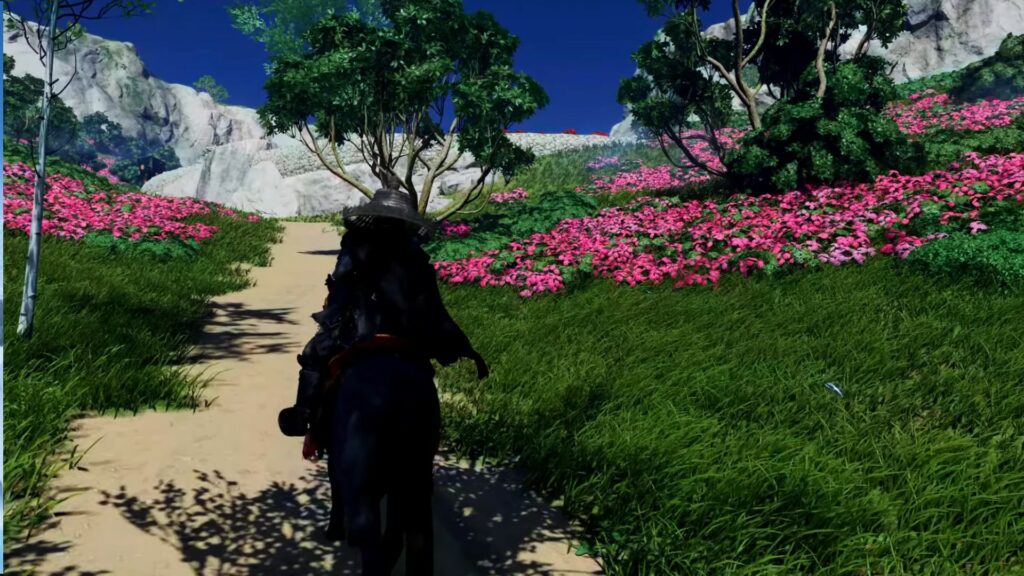
Okay, let’s talk about Ghost of Tsushima’s visuals and sound because, wow, they’re breathtaking. This game is a treat for your eyes, with landscapes that look like they’ve been plucked right out of a painting.
From bamboo forests to sunsets over the ocean, Tsushima Island is a place you’ll want to get lost in. Every detail, from the flowing grass to the quiet temples, is meticulously crafted. It’s a stunning world that begs to be explored.
But the visuals wouldn’t be complete without the audio. The soundtrack is a perfect blend of traditional Japanese instruments and sweeping orchestral scores.
The sound design is just as impressive—the rustling leaves, the satisfying whoosh of a katana slicing through the air, and the soft footsteps in the snow all make you feel like you’re right there in the action.
And don’t even get me started on the voice acting. The Japanese voices give the game an authenticity that adds even more weight to the emotional moments. Seriously, the audio and visuals come together to make Ghost of Tsushima feel like more than a game—it feels like an epic film that you’re living in.
FAQs
Yes, it is! Originally released for PlayStation 4 in July 2020, Ghost of Tsushima expanded its reach with the Director’s Cut edition in August 2021 for both PS4 and PS5. The game made its PC debut on May 16, 2024, allowing a broader audience to experience Jin Sakai’s journey.
Absolutely! A sequel titled Ghost of Yōtei comes out on October 2, 2025. Set around Mount Yōtei in 1603, it introduces Atsu, a female protagonist with a rich backstory. This one will also have a Legends mode, and it’ll be free.
Ghost of Tsushima is available on PlayStation 4, PlayStation 5, and PC. The PC version was released on May 16, 2024, expanding its accessibility to a wider audience.
Yes, primarily. The game focuses on a single-player experience, allowing you to immerse yourself in the story of Jin Sakai. However, there’s also a multiplayer mode called Ghost of Tsushima: Legends, which offers cooperative gameplay.
While Ghost of Yōtei is a sequel, it’s designed to be accessible to both newcomers and returning players. The story introduces new characters and settings, so you can dive in without prior knowledge. However, playing the original can provide additional context and enrich your experience (plus, it’s awesome, so I recommend it!).
Yes, there are! Sony Pictures and PlayStation Productions announced a film adaptation of Ghost of Tsushima, with Chad Stahelski set to direct. The film is currently in development, aiming to bring the game’s rich narrative and visuals to the big screen.
Pavle is the founder of PlayForge and its lead writer and reviewer, covering PC, PS5, and mobile games, a with a focus on RPGs, MMOs, FPS games, and more. He’s been gaming since the PS2 days and now writes in-depth reviews and guides to help players find their next obsession and get gaming insights from real players, not just critics. His reviews are honest and transparent, but he always tries to stay positive, because in his opinion, almost any game can be fun if you look at it the right way.
In his free time, he likes to (obviously) play more games, spend time with his family, theorycraft about various media with his wife, and watch anime. So yes, he’s a complete nerd, even if he’ll never admit it.

